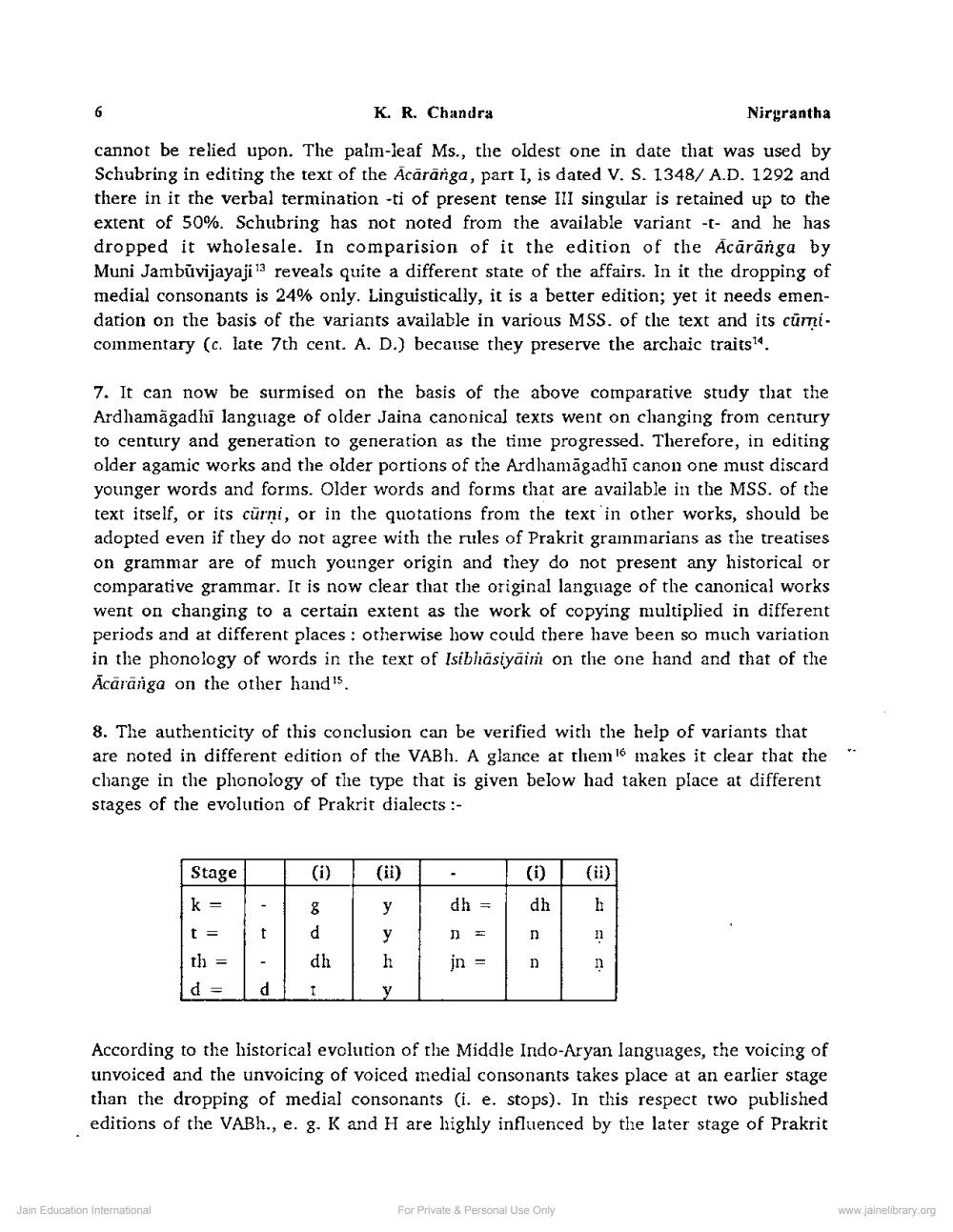________________
K. R. Chandra
Nirgrantha
cannot be relied upon. The palm-leaf Ms., the oldest one in date that was used by Schubring in editing the text of the Acāranga, part I, is dated V. S. 1348/ A.D. 1292 and there in it the verbal termination -ti of present tense III singular is retained up to the extent of 50%. Schubring has not noted from the available variant -t- and he has dropped it wholesale. In comparision of it the edition of the Acārāńga by Muni Jambūvijayaji " reveals quite a different state of the affairs. In it the dropping of medial consonants is 24% only. Linguistically, it is a better edition; yet it needs emendation on the basis of the variants available in various MSS. of the text and its cūrmi. commentary (c. late 7th cent. A. D.) because they preserve the archaic traits 14.
7. It can now be surmised on the basis of the above comparative study that the Ardhamāgadhi language of older Jaina canonical texts went on changing from century to century and generation to generation as the time progressed. Therefore, in editing older agamic works and the older portions of the Ardhamāgadhi canon one must discard younger words and forms. Older words and forms that are available in the MSS. of the text itself, or its cūrni, or in the quotations from the text in other works, should be adopted even if they do not agree with the rules of Prakrit grammarians as the treatises on grammar are of much younger origin and they do not present any historical or comparative grammar. It is now clear that the original language of the canonical works went on changing to a certain extent as the work of copying multiplied in different periods and at different places : otherwise how could there have been so much variation in the phonology of words in the text of Isibhásiyāin on the one hand and that of the Acarariga on the other hand".
8. The authenticity of this conclusion can be verified with the help of variants that are noted in different edition of the VABh. A glance at thiem 16 makes it clear that the ** change in the phonology of the type that is given below had taken place at different stages of the evolution of Prakrit dialects :
Stage
(i)
(ii)
.
k
=
dh = 1
dh
b
dy
dh
th = d =
0
According to the historical evolution of the Middle Indo-Aryan languages, the voicing of unvoiced and the unvoicing of voiced medial consonants takes place at an earlier stage than the dropping of medial consonants (i. e. stops). In this respect two published editions of the VABh., e. g. K and H are highly influenced by the later stage of Prakrit
Jain Education International
For Private & Personal Use Only
www.jainelibrary.org




